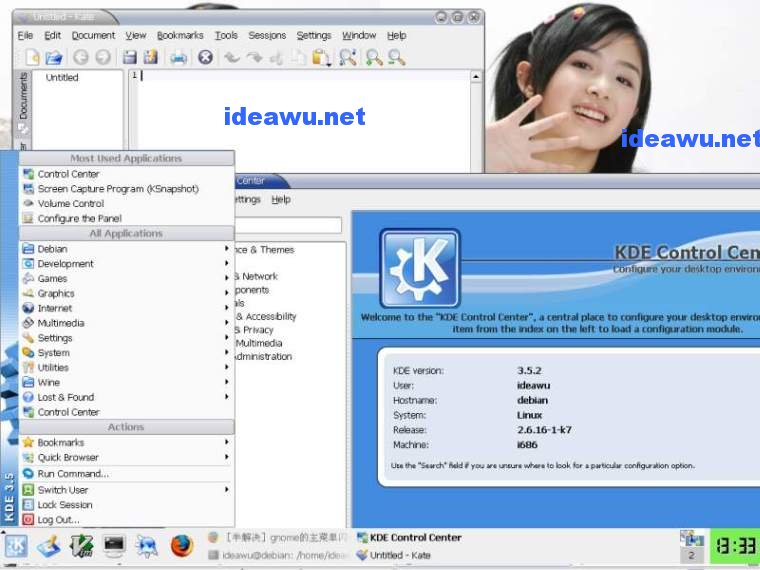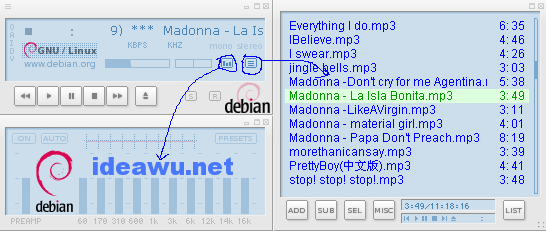GNOME won the desktop battle, will Linux lose the war?
original content published on April 27, 2006, http://linuxboxadmin.com/articles/gnomewon.php
Despite the head start that KDE enjoyed, the large number of KDE users and developers, and Linus Torvalds personally endorsing KDE, GNOME has won the desktop environment battle. The final victory came with the third piece of a corporate trifecta, giving GNOME the official nod from Red Hat, Sun Microsystems, and finally Novell. The question is, will the triumph of GNOME lead to the rise or downfall of the Linux desktop?
Novell goes GNOME
Red Hat and Sun Microsystems have long supported GNOME as their primary desktop environment. In August, 2003, Novell acquired Ximian, a GNOME oriented company. Then, in November, 2003, acquired SUSE, the second most popular Linux distribution and a KDE oriented company. For a time, it appeared there was an internal struggle to determine the official desktop direction of Novell SUSE.
After the departure of several high profile SUSE employees from Novell, GNOME was anointed as the default desktop. Novell pledged to continue support for both KDE and GNOME, but the writing is on the wall. With Red Hat and Sun already supporting GNOME, it probably made business sense for Novell to move in the same direction.
Beating the dead equine
The main argument I've heard for GNOME is that its license is more business friendly because the libraries are licensed under the LGPL while KDE libraries are under the GPL. Apparently, the LGPL provides more flexibility for vendors to integrate various bits of code into their distributions without GPLing all it. I am not a lawyer so I don't know how much this weighed in the decision of each company to go GNOME.
A couple of Linux heavyweights have come down on the side KDE. The most notable is Linus Torvalds himself, saying "I personally just encourage people to switch to KDE." Another luminary to side with KDE is the Slackware founder and leader, Patrick Volkerding, who stated "I do believe it would be best to let Dropline produce Slackware's GNOME and quit wasting my own time with it. Probably 1/3 of development time here is used maintaining GNOME, and *most* of the bug reports I get have something to do with GNOME (and aren't bugs I caused, or can fix)."
My own myopia
I've created "hello world" programs using KDevelop and GTK+, but never written a substantial application in either. KDE is based on C++ and GNOME is based on C. While I am not a fan of C++, the KDE class library is clean, consistent, and well documented while I found the GNOME model confusing. To me, the relationships in GNOME among GLib, GTK+, Pango, ATK, GdkPixbuf, and GDK were harder to grasp. Then, there is a segment of the GNOME world that is pushing Mono (a clone of Microsoft .NET/C#). Technically, KDE seems better thought out while GNOME seems to have grown organically out of the Gimp libraries.
As a user, I think both environments provide roughly equivalent feature sets and I can be happy and productive in both. Each has some programs I think are best of breed. In a vacuum, I would go with KDE, but I'd much rather use GNOME if all the programming talent from both camps could be focused in the same direction. Even 75 percent would be enough to smooth out whatever rough edges there are in GNOME.
Finally, I think the desktop environment will grow less significant over time. I am strong advocate of web applications. Web apps, whether they are based on LAMP, JSP, J2EE, or Ruby on Rails offer all the benefits of centralized deployment like a mainframe, but can also be run without a network connection if the server stack is installed locally. I like that the same code can be used as a multi-user network application and a single user local application.
Beggars have to be choosers
A logical question is do we have to pick one over the other? The answer depends on what you want out of Linux. If the goal is to advance Linux on the desktop, I think the answer is yes. There are countless obstacles to overcome before Linux gains popularity as a desktop, and I don't think everyone who uses Linux cares if it does. But for Linux to get commercial desktop applications and more hardware vendor support, there needs to be one desktop standard. It is just too expensive to support two.
This doesn't mean KDE would ever go away. It just means KDE would become a power user's choice like the dozens of other window managers and environments that exist. I've faced the fact that GNOME has won the battle and I'd better learn more about it. The benefit in the long run is more applications for the Linux desktop and better hardware and driver support.
Trickle down theory
While Linux as a server infiltrated the business world from the bottom up, I think the desktop will have to go from the top down. The people who brought Linux into the datacenter and the people who use Linux as a desktop today are by definition early adopters. They are power users not afraid to tinker with their computers that for most people are mysterious black boxes. I've even had trouble getting IT colleagues to try out desktop Linux because they don't want to invest the time. Most people are busy and have enough going on in their lives that they won't try Linux until they are introduced to it at work (i.e., forced to use it).
Most large desktop deployments will be driven and implemented by the big dogs in business, and will likely use GNOME. If desktop Linux can make inroads in the work place, it will become a lot less scary to the rank and file. It would also create an incentive for people to try it at home to improve their job performance.
With more Linux users at home, large hardware vendors have more incentive to offer it preloaded (and supported). That's when Linux on the desktop will really take off. I cringe at using the words "domino effect", but that's the way I see it happening, if it does.
I think the immediate hurdle is to standardize on the desktop. If the community refuses to get on board, and so far they have, no progress will be made. I have been ambivalent about it up to now, but see the wisdom in standardization.
The Long and Winding Road
Settling on a single desktop is just one step in a long, twisty path toward getting desktop Linux into the mainstream. GNOME has won the corporate battle and needs the support of the broader community. Because many people view KDE as technically superior and there are some egos at stake, that may be a bitter pill to swallow. Even if the community does coalesce around GNOME, it in no way guarantees success, but the continued fragmentation of the desktop guarantees it will languish.


